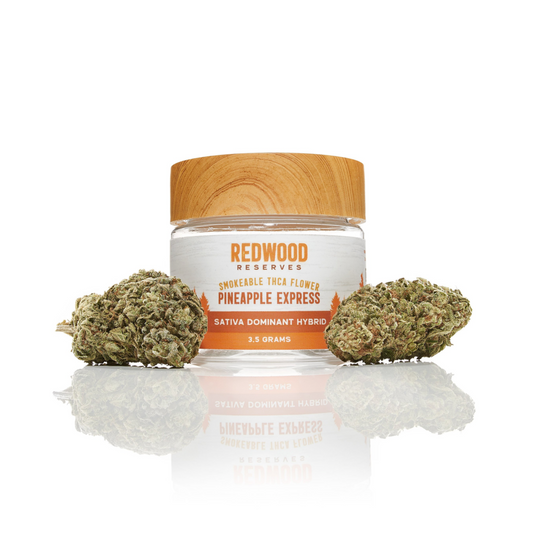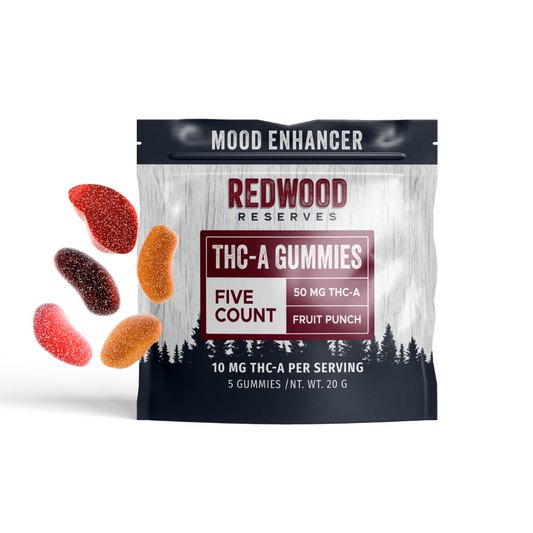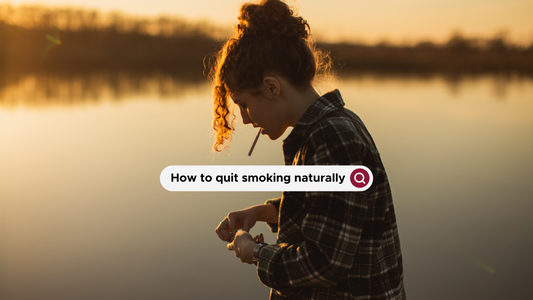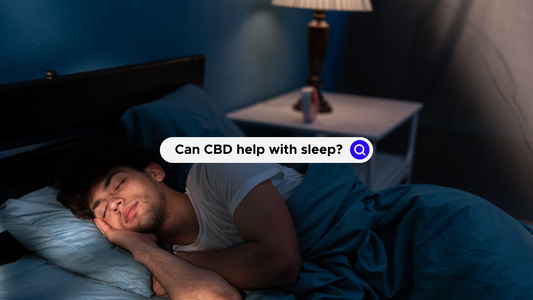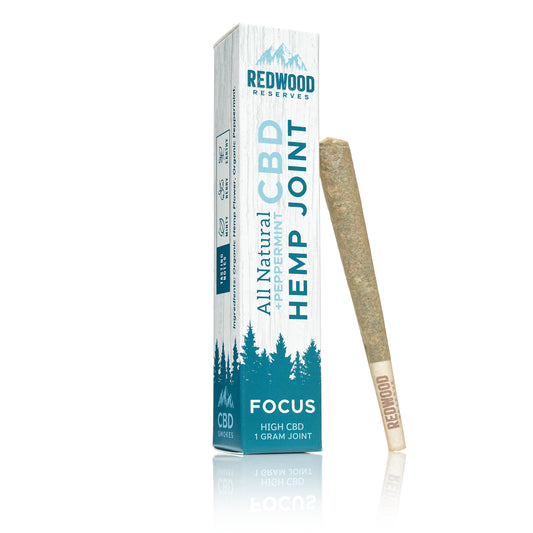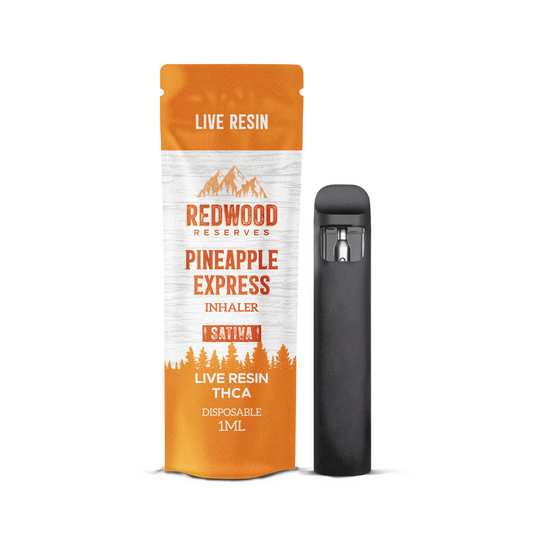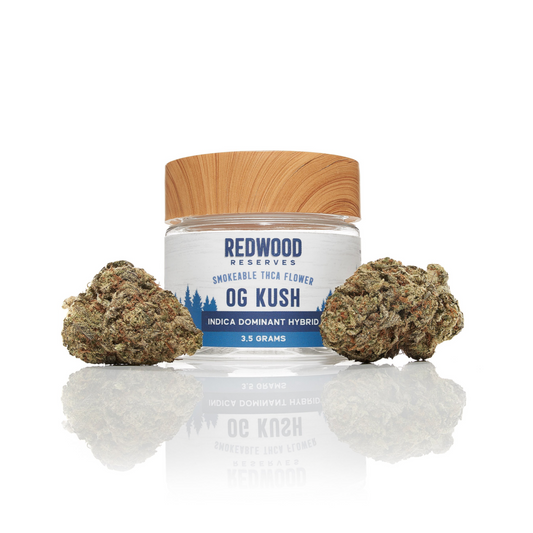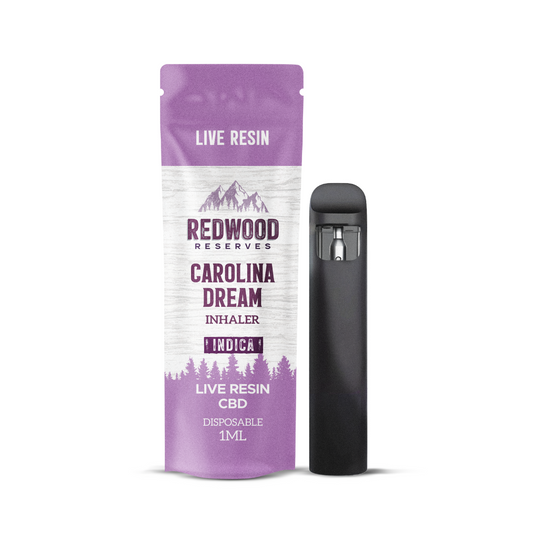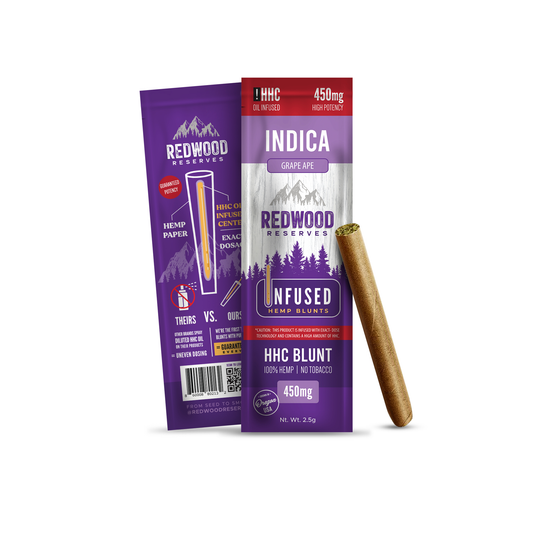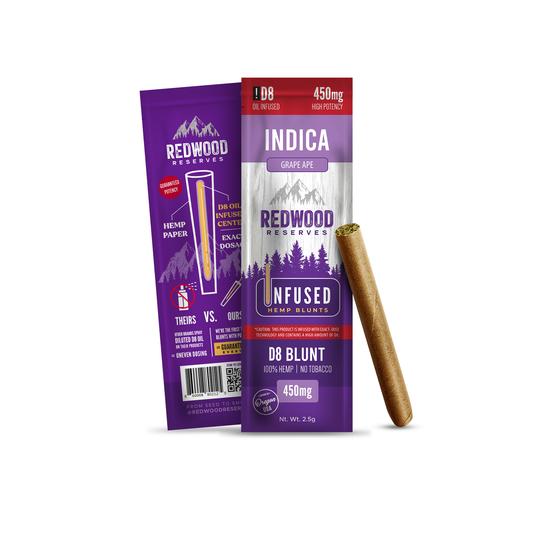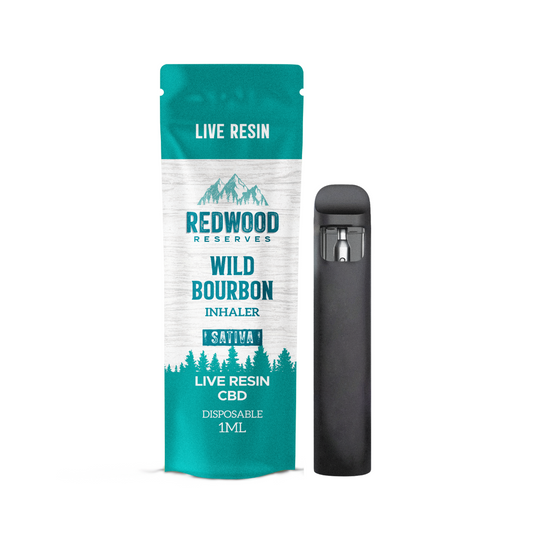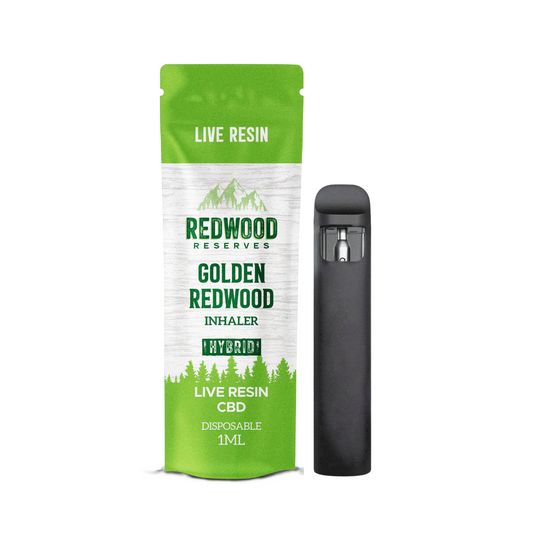As cannabis legalization continues to expand, more and more American are smoking THC— the intoxicating cannabinoid from the cannabis plant — than ever before.
A recent Gallop poll concludes that nearly 12% (39 mil.) of American adults smoke weed — the intoxicating form of Cannabis (as compared to non-intoxicating CBD), which contains the psychoactive compound tetrahydrocannabinol (THC).
And a national study in 2017 estimates that 3 million Americans start smoking weed each year.
In fact, the same study concludes that 26 million Americans aged 12 or older are current users of marijuana, smoking weed at least once in the past month.
For many marijuana users, THC is harmless. Aside from an occasional bout of couch-lock, cotton-mouth, or late-night, diet-busting munchies, the side effects of smoking weed (for most) are minimal.
But others often report that smoking THC over time can lead to a litany of unwanted side effects, including:
- prolonged anxiety
- increased depression
- nausea and vertigo
- social anxiety
- social withdrawal
- decreased productivity
- problems building social relationships, and more …
And while past research does suggest that cannabis may be less addictive and less harmful than other substances, over 25% of regular marijuana (THC) users perceive ‘great risk’ from regularly smoking marijuana.
In fact, recent data from the National Institute on Drug Abuse suggests that 30% of THC users may have some degree of “marijuana use disorder”. And “how to quit smoking weed” has grown in popularity online:
When you want to quit (or cut down on) smoking weed, for any reason, there are 3 main things to consider:
1. WHY you want to quit smoking
2. HOW you plan to quit smoking, and
3. Making a plan to deal with THC withdrawals
First, let’s take a look at the foundation of your desire to quit smoking weed — your WHY.
Decide WHY you want to stop smoking weed
Everyone has their own reason for wanting to stop smoking weed. And defining that reason is a great first (and perhaps most powerful) step to accomplishing your goal.
Because the first step to forming new patterns (and breaking old ones) is to harness the power of intention.
An intention simply implies what one “has in mind to do”. It can be as simple as saying to oneself, “I will quit smoking.”
When setting an intention, stick to strong verbs, such as WILL, SHALL, and DESERVE TO … in place of want, need, or wish.
An intention is not a ‘hope’ … it is a clear, definable mental plan of action. And it is reinforced with a WHY.
Whatever your reason for quitting, when setting you intention to quit, be clear with yourself about WHY you want to stop smoking weed:
I WILL quit smoking weed, BECAUSE it is making me lazy.
or
I WILL quit smoking weed, BECAUSE it is keeping me from the focus I need to do the deep work my goals require.
or
I WILL quit smoking weed, BECAUSE I am using it to cover up deeper emotional distress.
Research has revealed a surprising truth about addiction: more people quit addictions than maintain them. The really good news? The majority do so on their own. How? By recognizing that their addiction interferes with something they value. This very recognition creates the confidence needed to change.
Whatever your reason for quitting any unwanted habit (including smoking weed), the first step to success is to define your WHY by setting a clear intention.
Decide HOW to quit smoking THC
Now that you know the WHY of quitting, it’s time to decide on the HOW.
Daunted?
Don’t be. Believe it or not, once you know the WHY, the HOW is pretty straightforward … with one very important IF:
Deciding HOW to quit smoking weed is fairly straightforward, IF you are willing to be honest and upfront with yourself.
Notice how I didn’t say ‘criticize’ yourself, or ‘judge’ yourself, or ‘beat yourself up’? It is critical to understand that being honest with oneself does not require (nor should it ever include) any form of shame, guilt, or insecurity.
Why is being honest with yourself so important to the success of HOW you quit smoking?
Because “HOW to quit” anything requires a personalized approach. It requires the mindfulness to identify your triggers and cues, and to make the connection between why you want to quit smoking and how you will do so.
In other words, what works for your buddy might not work for you. That being said, a little inspiration never hurt.
5 easy tips to quit smoking THC:
- Trash the stash
- Set a routine
- Find new hobbies
- Enlist the help of others
- Run with a new crowd
1. Trash the Stash
If you’re serious about quitting, it’s probably not the best idea to have your stash around. Or anyone’s stash, for that matter. The urge is just too strong.
Fight the temptation to “keep a little just in case” … chances are that if some loud herb is lying around, you’ll find an excuse to smoke it (hey, I know I would).
So pass the grass to a friend. Say so long to your bong. Swipe the pipe out of sight and out of your home entirely.
Surely you don’t smoke and drive, but if you have ever hot boxed your ride (while it was PARKED in your garage!!), consider a deep interior clean, and be sure to empty the ashtrays and that infamous center console.
By eliminating your cues (and your supply), you will be making a very strong commitment to yourself: TODAY is the day I quit smoking weed.
2. Set a routine
When you want to quit smoking weed, the value of staying busy cannot be overstated.
How many times have you packed a bowl because you couldn’t think of anything better to do?
*Raises own hand*
This is where your WHY comes back into play. Now is the time to remember that intention, and to make a plan for reaching your goals.
Define the small goals you need to achieve the big goals down the road. Write them down in big block letters and pin them to the wall. Keep a copy near the place where you’re most tempted to smoke (yes, I’m talking about near the couch).
Try time blocking. By scheduling out each minute of your day, you will not only be more productive, but you will also be less likely to fall into the habit of filling ‘dead time’. Those times when you are bored and looking for something to do are also the times when you are most likely to relapse. Instead, take structured breaks.
3. Find New Hobbies
The SUREST way to quit smoking weed (and stay smoke free) is to replace it with better habits. How many times a day do you usually toke up? Are there certain times when you are more likely to smoke than others?
Whatever the case may be, fill those times when your urge to get high is strongest with focus-oriented activities.
Want to learn a new skill? Schedule in your study and practice sessions during your usual down time. Want a clearer mind? Try meditation. Want to shed a few of those phantom pounds you gained with late-night munchies? You do not need a gym membership to start a vigorous and effective workout routine.
The important thing is to begin to fill your downtime. You’ll be amazed how quickly your urge to toke is reduced by simply having something else to do.
By replacing the dopamine kick of THC consumption with a reward system built around healthy habits and social enrichment, you will not only find yourself less likely to relapse, but will have also built up a more healthy and more natural biological reward system (and picked up some killer new skills along the way)!
A habit journal can be a powerful ally in your fight to replace habits. And creating your own is easy. Simply turn a page in your journal (or any piece paper) ‘landscape’ and list the habits you want to practice down the left hand side of the page. Then, across the top, write the name of the month and each day (with a little space between) across the top of the page.
Make a daily goal to accomplish each habit you’ve listed (start with small goals like meditation, exercise, cooking, or journaling), and once you do, place an X (or a check) in the corresponding place where the date and the habit intersect on the page. You’ll be surprised just how GOOD making those checks can feel. And by focusing on accomplishing the habit “just for today”, you will quickly notice a long “chain” of X’s accumulate. Take pride in that chain and try not to break it!
While we are on the subjects of journals …
Journal your progress. When something difficult comes up, when you have an urge, or when you feel yourself resisting the goals you’ve set out for yourself, spend some time on self-reflection by writing down your thoughts. Here are some questions you might find worth considering:
• Why am I feeling the way I am?
• What is giving me the urge to smoke weed?
• How will I feel after I smoked? The next day?
• What are my reasons for wanting to quit? For the goals I have set?
• How would it feel to break my own commitments?
• How would it feel to push through this momentary discomfort?
4. Enlist the Help of Others
Accountabili-buddy is more than just a lot of fun to say. It’s a key part to success when it comes to kicking any unwanted habit. Why?
- It provides a system of support, and
- It provides a means of accountability
So bite the bullet and have the awkward conversation. Pick up the phone. Shoot a text. Let someone (anyone) know that you no longer think that smoking weed is serving your best interest, and that you are making a plan to quit.
Let them know why, and how, and when you plan to quit. Then, if things get tough, reach out to your supports … you don’t have to do it alone!
Think of it as your safety net. Call old friends (and your mom!). Join the community garden. Attend a Meetup. Volunteer your time. By surrounding yourself with positive support, you can increase your odds of getting sober and staying clean.
Which leads to the final (and possibly most difficult) tip to quit smoking weed:
5. Run with a New Crowd
I’ve made a lot of great friends around the rotation. But let’s be honest (b/c changing habits is about facing hard truths):
The crowd you get high with, is NOT the crowd that’s going to help you quit.
Let me say that again:
The crowd you get high with, is NOT the crowd that’s going to help you quit.
I have a hunch. This is the advice you are least likely to take. But before you click away, hear me out!
I’m not suggesting you break up with your weed-smoking friends. That would be lame, and unnecessary. What I am saying is that if you are serious about quitting, sitting around while your buddies pass the joint, or the bong, isn’t going to help make things any easier.
So let your smoking circle know that you are trying to quit. It doesn’t mean you can’t hang out. Suggest doing something new without the ‘enhancement’ of smoking weed.
Or, even better, take this time to expand your social circle.
2. Join Meetups
3. Take a stroll around your neighborhood
4. Volunteer
5. Go on a date (singles only!)
Plan for Withdrawal Symptoms
Not everyone experiences withdrawal symptoms when they quit smoking weed, but the symptoms faced by those who do can be pretty uncomfortable. Common withdrawal symptoms include:
- trouble sleeping
- anxiety
- irritability
- mood swings
- headaches
- loss of appetite
- lack of focus
- loneliness
- insecurity
Not a ton of fun.
And the truth is (if we’re being honest) that some of these symptoms may have existed before you tried to quit, and in fact, may even have contributed to your decision to start smoking weed in the first place.
Here’s where the mindfulness skills and that journaling practice mentioned earlier can be invaluable. Log your symptoms. Spend time with the discomfort. Ask yourself which symptoms might have symptoms of their own. In other words: what causes you to be irritable, to experience anxiety, to have trouble staying asleep?
Often, it is the very ailments you sought to alleviate in the first place that show back up when you are trying to quit. And it is these symptoms of withdrawal that present the biggest danger to your success.
So what do you do when the symptoms seem too strong to cope with? CBD flower might be able to help!
Can Smoking CBD Flower Help you Quit Smoking Weed?
If you do experience THC withdrawal (not everyone does), then you will want to have put a plan in place for dealing with its symptoms.
The challenge? There aren’t very many natural remedies that are designed to assist with the symptoms of THC withdrawal.
And sometimes, ‘white knuckling it’ just isn’t an option.
In the past, many people have turned to the natural benefits of CBD for relief with their cannabis withdrawal symptoms.
But users often find ingestible CBD to offer little practical relief for a few commonly stated reasons:
- High dosage required
- Prohibitively expensive
- Off-putting taste
By offering relief that is more potent, more accessible, and longer lasting (while retaining the ritual), many people who want to quit smoking weed have turned to CBD Flower for help.
How CBD Flower Can Help You Quit Smoking Weed
First, let’s take a very quick look at the difference between CBD and THC:
THC and CBD are both cannabinoids derived from the cannabis plant, with one very important difference:
THC is intoxicating (gets you high), while CBD is non-intoxicating and does not get you high. In order to be federally legal (and therefore available for sale) in the United States, CBD flower MUST have less than .3% Delta 9 (intoxicating) THC.
In other words, CBD offers the benefits of THC (including stress relief and relaxing), without getting you high.
And that makes CBD flower an ideal choice for dealing with the symptoms of THC withdrawal that accompany quitting weed.
Premium CBD Flower contains high concentrations of CBD (a naturally occurring compound that has been suggested to assist the body’s endocannabinoid (ECS) system), and its regulation of a range of important bodily functions, including:
- sleep
- mood
- anxiety
- focus
- appetite
Do any of those look familiar? They should. They’re the exact same symptoms that crop up when you experience THC withdrawal.
Plus, studies have shown that CBD may help neutralize the triggers that lead to relapse.
And because your CBD consumption method plays such a critical role in its efficacy, users with more severe withdrawal symptoms tend to choose smoking CBD as their consumption method of choice.
BUT WAIT, THERE’S MORE!
CBD flower looks, feels, smells, and tastes almost identical to THC flower, which means it can help you quit smoking THC by providing:
- immediate and long-lasting relief for withdrawal symptoms
- many of the same benefits of THC, but without getting you high
- a gradual method to quit or cut back
- an affordable and accessible option for relaxing
- a means to retain the ritual of smoking sessions
How to Use CBD Flower to Quit Smoking (or cut back on) THC
CBD flower can help you quit smoking weed AND naturally ease the (often sever) symptoms of THC withdrawal.
Interested in using CBD flower to help you quit smoking weed?
3 tips to quit smoking (or cut down on) THC with CBD flower:
1. Find a reliable vendor. R/hempflowers is a great place to start! If you don’t already have a Reddit account, setting one up is quick and easy. The ‘Hemp Flowers’ forum is FULL of reviews and recommendations, and has a TON of new user-sourced content every single. This is the single best (and quickest) place to get your CBD flower education … and a lot of CBD flower vendors have accounts and interact there as well. ALWAYS be sure to check a vendor’s COAs and verified user reviews BEFORE placing an order.
2. Try a gradual approach. One of the most popular methods for using CBD flower to quit smoking weed is what I like to call the substitution approach. And it’s especially effective for two reasons. One, it’s a gradual approach and two, CBD not only counteracts withdrawal symptoms, but can also reduce the effects of THC.
How does it work?
- break up the usual amount of THC
- replace 1/3 of the THC with CBD
- use the 1:3 CBD to THC ratio for ONE WEEK
- up the ratio to 1:1, using 1/2 THC & CBD
- use the 1:1 ratio for TWO WEEKS
- up to ratio to 3:1, using 2/3 CBD
- use the 3:1 ratio for TWO WEEKS
- medicate with ONLY CBD flower
3. Go cold Turkey. A cold turkey approach is most likely to produce the most severe withdrawal symptoms. To combat these symptoms naturally, we urge those who are quitting weed cold turkey to try CBD flower when symptoms or cravings are at their worst. CBD flower can help you quit smoking weed TODAY, while offering an all-natural, non-addictive way to combat symptoms of withdrawal.
To have the best chance of success, a holistic approach to quitting weed is always the best option. And that’s why this Ultimate Guide is so exhaustive (and long!), so to review:
The Ultimate Review
3 main considerations:
- Decide WHY you want to quit smoking weed
- Decide HOW you want to quit smoking weed
- Make a plan to deal with craving and withdrawals
5 steps to quit smoking weed:
- Trash the stash
- Set a routine
- Find new hobbies
- Enlist the help of others
- Run with a new crowd
CBD Flower may help withdrawal symptoms, including:
- sleep
- mood
- anxiety
- focus
- appetite
- craving suppression
CBD Flower may help you quit smoking weed by providing:
- immediate and long-lasting relief for withdrawal symptoms
- many of the same benefits of THC, but without getting you high
- a gradual method to quit or cut back
- an affordable + accessible option for relaxing
-
a means to retain the ritual of smoking sessions
How to use CBD flower to help you quit smoking weed:
- Find reliable vendors by doing product research online
- Gradually substitute marijuana with CBD flower over time
- Use CBD flower to ease withdrawal symptoms when quitting cold turkey
How to substitute CBD flower for THC flower:
- break up the usual amount of THC
- replace 1/3 of the THC with CBD
- use the 1:3 CBD to THC ratio for ONE WEEK
- up the ratio to 1:1, using 1/2 THC & CBD
- use the 1:1 ratio for TWO WEEKS
- up to ratio to 3:1, using 2/3 CBD
- use the 3:1 ratio for TWO WEEKS
- medicate with ONLY CBD flower
Ready to give CBD Flower products a try?
Browse our large selection of organically grown, slow cured CBD flower products (w/ verified reviews), in our Shop.
You can also find more great educational content on our blog.



